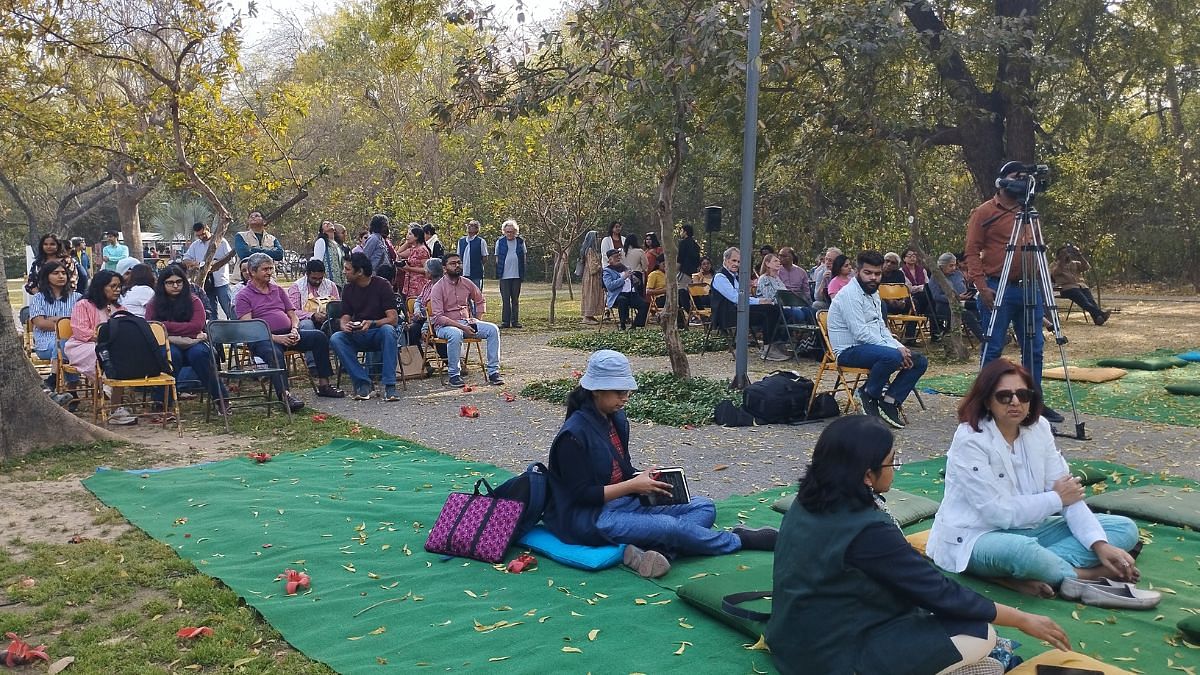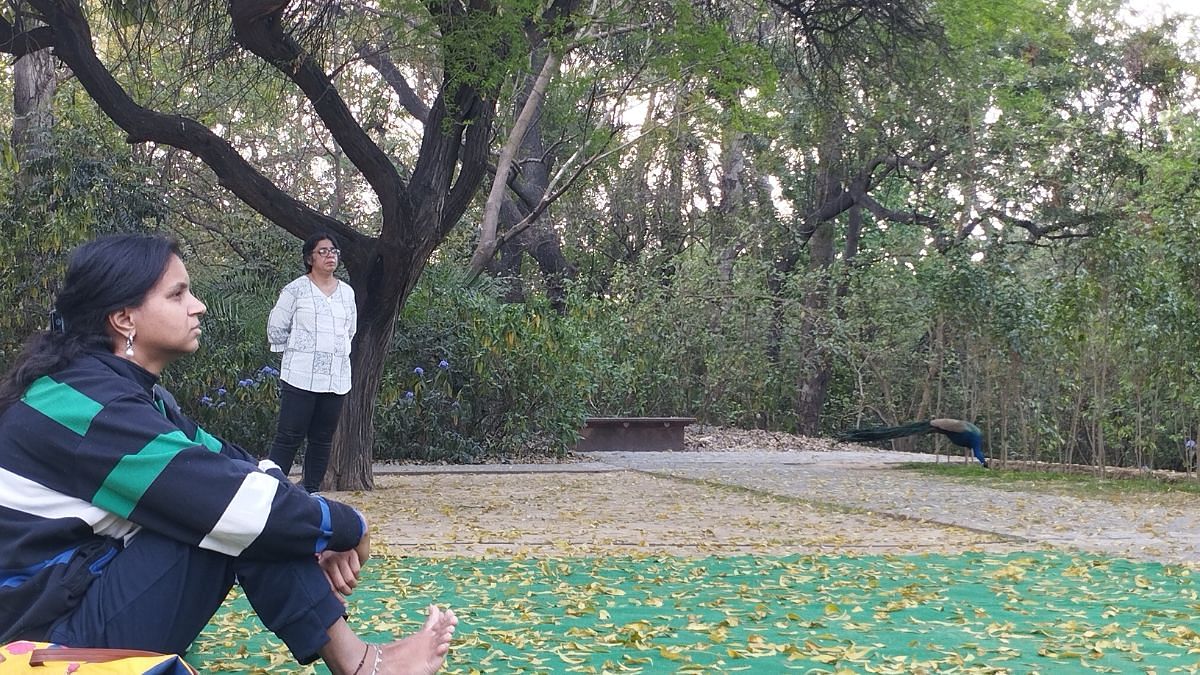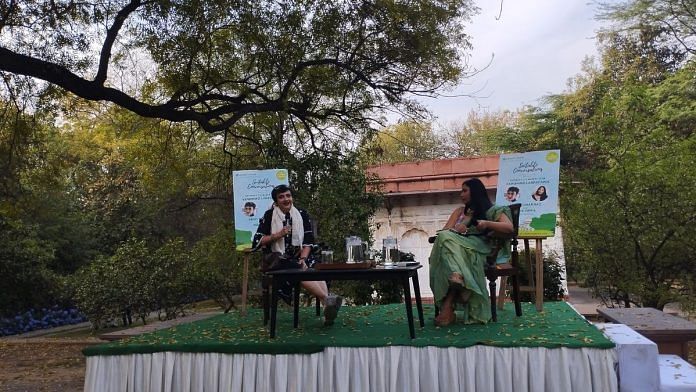New Delhi: In the Thar Desert, where the water is brackish, vital catchment areas are under threat. In the Ganga, dams and ships are affecting the dolphins’ way of life. A vanishing coastline and rising sea levels in Mumbai have raised the spectre of devastating floods. And the shrinking Sundarbans is a stressor for the tiger population.
Climate change is not just a threat to plant and animal species—our landscapes are also in peril, along with the language of the land. In a freewheeling talk at New Delhi’s Sunder Nursery on 16 March, authors Arati Kumar-Rao and Neha Sinha explored how India’s landscapes were responding to climate change, encroachment, and unplanned development.
Author, artist, and photographer Kumar-Rao drew from her travels while writing her book Marginlands: Indian Landscapes on the Brink, where she captured the lives of those inhabiting the margins of the subcontinent from the Thar Desert to the Sundarbans.
“Step back to look at what we’re doing to the landscape and how we’re imposing our will on it. This is a mindset that has persisted for centuries and colonial hangover,” said Kumar-Rao.
The problem is that nobody stops to think about landscapes unless there is an act of violence or natural disaster—when dams collapse, when people die in floods, or when devastating earthquakes occur.
“Landscapes are almost on the verge of extinction. But that’s not a word that’s evocative,” said Sinha. It’s apt that she thinks about landscapes as becoming ‘extinct’. In her book, Wild and Wilful, she wrote about 15 Indian animal species that face the threat of extinction.
As landscapes disappear, and ways of life become outdated, languages change as well. Words vanish from the lexicon, reflecting an erosion of cultural and linguistic heritage.
“We don’t seem to think about landscapes in a way that pays attention to the system that is also connected to us,” said Sinha.

Also read: ‘Asia on the Move’ looks beyond Silk Route. Musicians, painters forged India’s ties too
‘Desert is a wonderful creature’
As the landscape changes, it affects the plants, insects, animals, and humans that live off it.
While researching for her book, Kumar-Rao followed a Thar desert dweller who can coax fresh water in the driest of landscapes by constructing a patali kuan, a traditional dune well. In the Sundarbans, where tigers prey on humans, she met ‘tiger widows’, one of whom lost her father, uncle, and later her husband. In Ladakh, she met Sonam Wangchuk, who is leading a team of workers constructing artificial glaciers.
Kumar-Rao considers the desert as a “wonderful, living breathing creature”, one that imparts lessons on forbearance, patience, and endurance. The desert makes people slow down because it cannot be hurried, teaching individuals to align with the rhythm of life.
“There’s a forbearance among people in the desert; they can ‘read’ the land even when it changes very minimally,” she said.
As the authors spoke, the audience started paying attention to where they were—the Mughal Pavilion in one of New Delhi’s most well-known green oases. Cherry-red semal flowers adorned the majlis, and a squad of squirrels chirruped loudly, almost as if they were competing with the mynahs and barbets, while peacocks strutted by.
“Landscape keeps us alive. It allows our five senses to respond equivalently,” said Kumar-Rao.

Lost language
As the conversation changed course from landscape to language, Sinha took umbrage over the use of certain animals to describe less-than-desirable traits in humans. Why is ‘vulture’ used for corrupt politicians? They are extremely intelligent and patient creatures–more important than politicians, she said, as everyone burst into laughter.
Both speakers shed light on the politics of language that “abuses” animals. Rogue elephants for people who stray from the script. Donkeys are hardworking and smart animals, yet we use them in a negative context.
Language is intrinsically linked to the landscape. In his dictionary, Landmarks, British academic and writer Robert Macfarlane rediscovers the landscape of Britain to restore “literacy of the land”.
People have different words to describe landscapes that would probably be overlooked, explained Kumar-Rao, giving the example of how people in North India call the Madras thorn ‘Jungle Jalebi’. Similarly, the sandpiper bird is called ‘titiri’ in Rajasthan because it makes a “te-te” sound.
“It comes down to the keen observation that these people have for the landscape and how that brings with it an importance and respect for the land. It’s naming with a thought,” said Kumar-Rao.
Language is very important for preservation and conservation. Kumar-Rao touched upon the issue of elitism in the vocabulary of landscape, and the “depletion” of native languages for those terms. ‘Thar’ comes from the word ‘thul’, used in Rajasthani dialect, signifying men are without life.
She invited everyone to reclaim this landscape glossary and restore the lexicon of the natural world. “Because the kind of education that our society has these days does not relate to the landscape that we have. Let’s try and build this up.”
(Edited by Ratan Priya)



